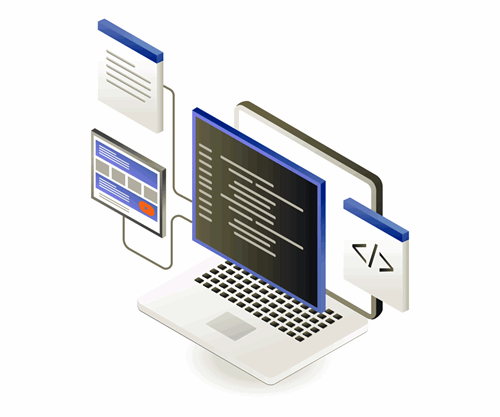CSW Solutions has been named one of the Best Mobile App Developers in Chicago by Expertise.com! Read on to learn more.
Web Application Architecture Explained for Business Leaders
When the decision has been made to develop a web application, one of the most important factors to consider is the architecture the application is to be built on. Regardless of an in-house or third-party vendor, the right architecture is crucial to the success of your project. It is most likely that your development partner or your CTO will be able to assist and guide you through this decision. But it is highly recommended that you understand the basics of the types of architectures in a web application.
Today, I will go over some web architecture fundamentals and try to simplify this complex software topic.
What is Web Application Architecture?
Quite simply, when we discuss web application architecture, we are referring to the relationship and interactions between the various components that make up a web application like servers, databases, front-end user interfaces, and all the other components within the infrastructure. A web application is comprised of these elements and the architecture defines these parts work with each other.
When you access a website in your browser, the architecture is everything that is happening, "under the hood." Each application has its own architecture but there can be really "bad" architecture too. This is where there are Best Practices that we would recommend you would adhere to.
To better understand the architecture of a web application, we need to take a closer look at the main components of a web application. Web apps are made of two main parts. The back-end (backend) and the front-end (frontend).
Front-end: In technical terms, also known as the client-side, it refers to what is seen on the public browser. This is the visible part of the application and it's the only component of the web app that the user interacts with. Back in the day, the front-end was created with markup languages like HTML and CSS, along with some scripting in the form of JavaScript. However, today there are an additional slew of front-end platforms like React, Vue.js, and Angular.
Back-end: Also known as the Backend, this refers to the code behind the application that contains the business logic of the app and the coding layer that communicates with the database. This part is not visible to users and is also usually complied and encrypted. The back-end of the web application is coded using languages like C#, Java, Python, and PHP.

Web Application Architecture Models
Developers use two main web app architecture modules when building an application.
Monolithic
The most conventional approach to creating a web application is monolithic architecture. Applications that are monolithic are created as a single, integrated unit. As a result, whenever developers want to update an app and make code changes, they must completely update the whole application and release a new version. Monolithic architecture can be a fantastic fit if you're developing a small-to-medium size web project.
Microservices
In contrast to monolithic design, microservices break down functionality into smaller units and each unit is in charge of a specific task. Therefore, each distinct component of the system is managed by a different microservice. This systemic architectural approach is excellent for complex or large-scale web applications since it makes the solution easier to maintain and enables simple scaling. I should note that microservices and web services are not the same thing. Web services are a way of integrating and communicating between different web applications, whereas microservices are a stand-alone application architecture model. They are two completely different elements of an application.
Web Application Layers
No matter which application model you choose, every application has three basic layers.
- Presentation Layer - This is what your user sees and interacts with. This layer makes it easier or more fun for users to interact with your website.
- Business logic layer - Also known as the application layer, it refers to the logic that drives the application. The business logic is usually in charge of the main functionality of the application.
- Data Layer - This layer is in charge of managing the communication between the database and the application itself. It covers all operations that allows the application to retrieve and save data.

What makes a well-built Web Application?
There are six elements that construct a well-built web application:
- Security - The application is secured by default. It encrypts and hides information and exposes only the minimum necessary to perform its duties. Credentials are handled properly; data is encrypted in rest and in transport. The website uses strong security certificates and ciphers and it does not show signs of weaknesses listed in the OWASP Top 10 report.
- Best Practices - The application should be built following good coding practices in terms of technology, architecture, standards, and patterns. This will be key in any future development.
- Performance - The application is built using the best tools and provides exceptional response time to end-users.
- Flexibility - The application architecture is modular and extensible which makes it easy to grow and adapt to new features and technologies.
- Scalability - The application functions properly in a multi-instance environment (e.g. web farm) that allows it to scale up and out to accommodate more load as needed.
- Modern - The application uses web technologies that adapt to user devices, from desktop computers to smartphones. The experience must be fast and friendly regardless of screen size or browser.
The ideal Web App Architecture
The efficiency and usefulness of a web application are directly related to its architecture. The web application architecture will determine the end-user experience, the speed, and security of the web solution, as well as how well the app performs in search engine results.
At CSW Solutions, we recognize the value of understanding our clients' needs to be on the same page with them. As a result, whenever we design and offer web application development services, we are dedicated to working with you to ensure that the end result will significantly improve your business processes and meet your goals.
Do not hesitate to get in touch if you are prepared to discuss your idea and create a cutting-edge web application. We'll be pleased to collaborate with you and assist in selecting the best architecture for your project.
